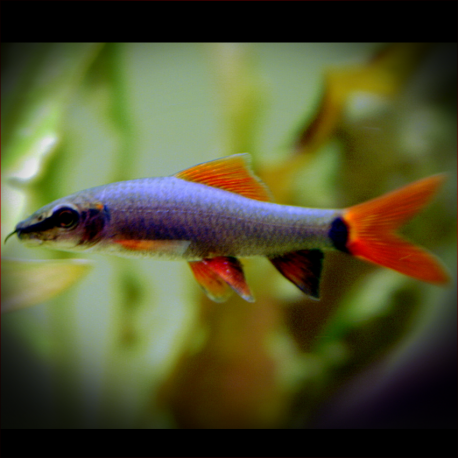More info
Datasheet
| Minimum Tank Size | 270 litres / 71.33 US gallons |
| Maximum Size | 15.0cm / 5.91inches |
| Temperature | 20°C / 68.00°F - 26°C / 78.80°F |
| Hardness | 2.02dgH / 36ppm - 15.02dgH / 268ppm |
| pH | 6.5-8.0 |
General Description
The Epalzeorhynchos Frenatum, commonly known as the Rainbow Shark, is a popular aquarium fish known for its vibrant colors and distinct appearance. Originally from Thailand, Laos, and Cambodia, this species prefers grazing on algae, small crustaceans, and insect larvae in its natural habitat.
Aquarium Setup
When setting up an aquarium for the Rainbow Shark, it is important to provide ample hiding spaces and cover. A flowing river simulation with a substrate of rocks, gravel, and driftwood is ideal. This species thrives in well-lit tanks with aquatic plants like Microsorum and Anubias attached to the decor. Maintaining high dissolved oxygen levels and moderate water movement is crucial.
Behaviour
The Rainbow Shark tends to be territorial, especially as it grows older. It can display aggression towards similar-looking species and may form alliances with certain fish like Chromobotia macracanthus. In captivity, it is recommended to keep them singly due to their territorial nature and potential aggression towards tankmates.
Feeding and Diet
Primarily an aufwuchs grazer, the Rainbow Shark feeds on algae, small crustaceans, and insect larvae. Offering a varied diet of live and frozen foods such as bloodworms, Daphnia, and Artemia, along with quality dried flakes and fresh plant material, helps maintain its health and coloration.
Reproduction & Dimorphism
While breeding in private aquaria is uncommon, Rainbow Sharks are commercially farmed for the ornamental trade. Sexually mature females are thicker-bodied than males, and males typically exhibit a dark marginal edge on the anal fin. Juveniles are challenging to sex accurately.
Habitat and Distribution
Rainbow Sharks are typically found grazing on sandy or rocky substrates in streams and rivers. They may migrate to flooded areas during the wet season. Originally native to Thailand, Laos, and Cambodia, populations have dwindled due to environmental changes, with most specimens in the aquarium trade sourced from commercial farms.

